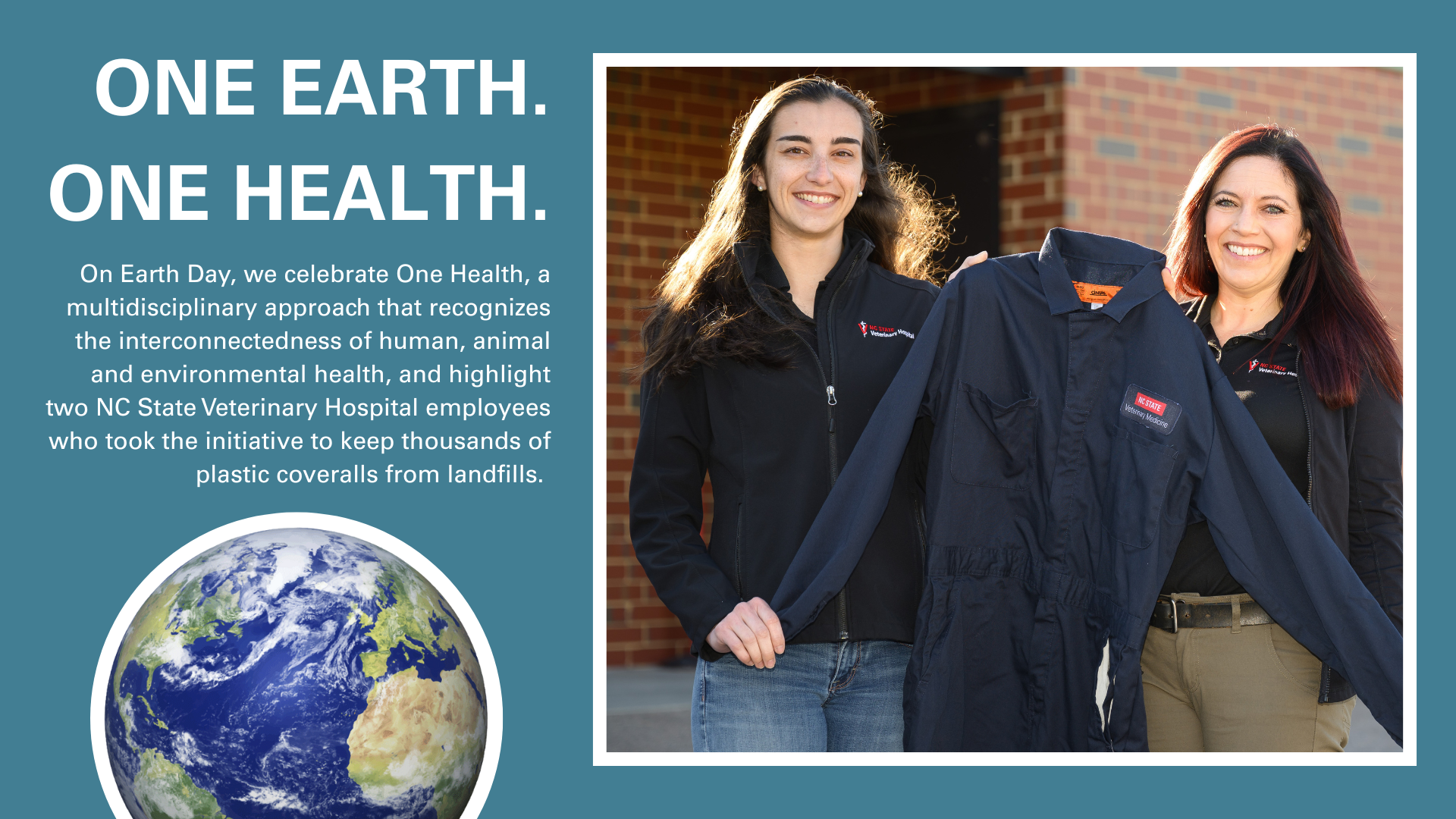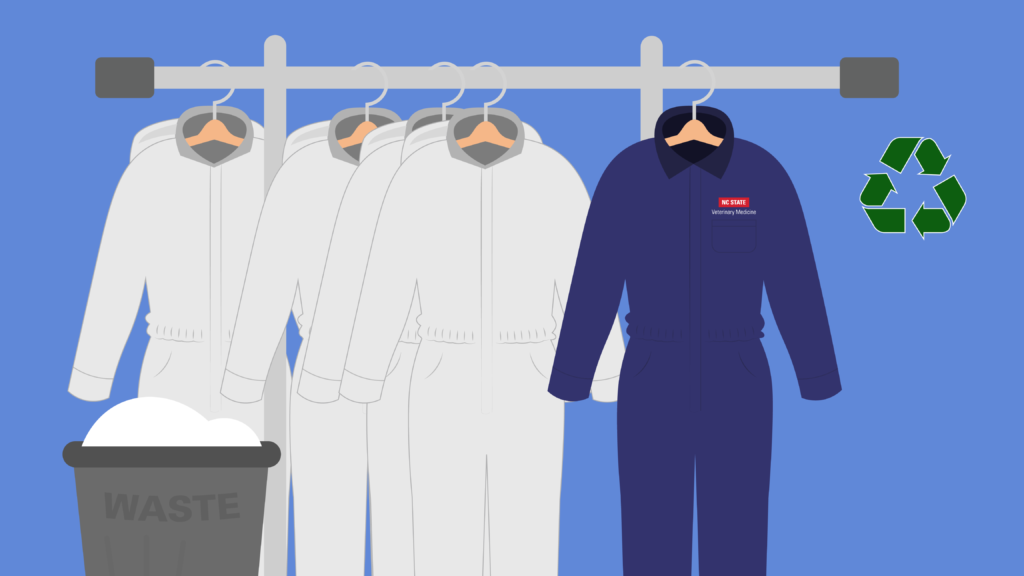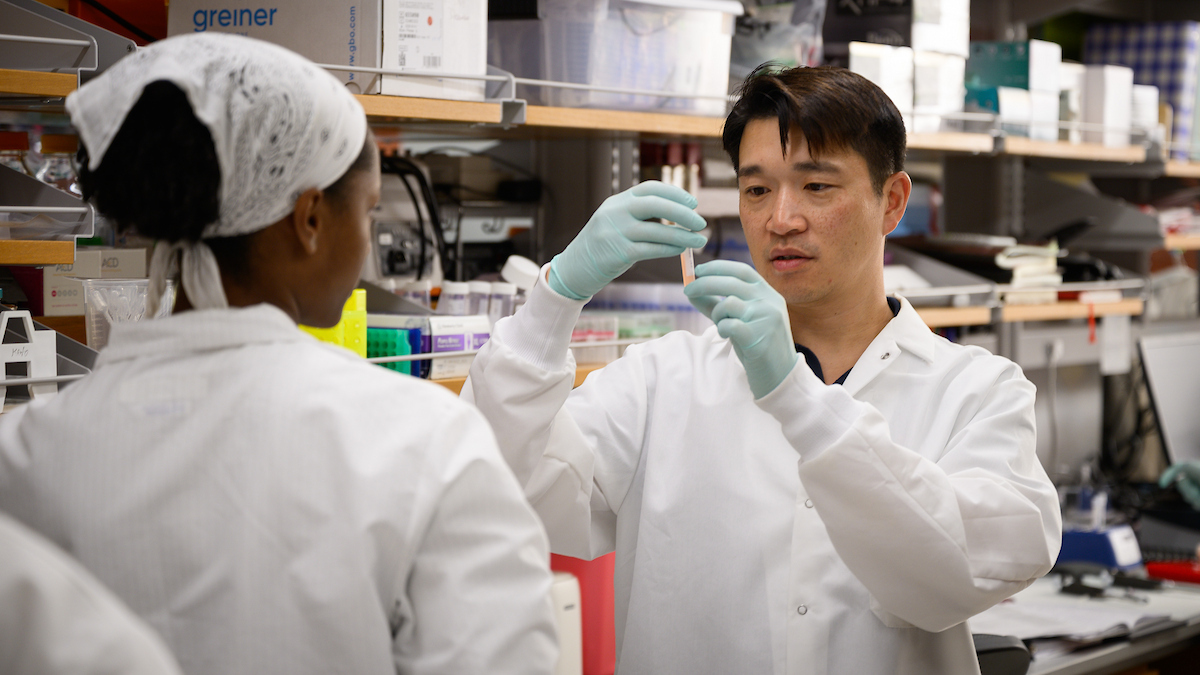Employee-Led Eco-Friendly Initiative Reduces Plastic Waste at NC State Large Animal Hospital
By switching to reusable garments, hospital care teams have saved thousands of plastic coveralls from disposal since March. It’s all thanks to equine faculty member Dr. Kate Hepworth and hospital director Olivia Stallings.

Reducing medical waste is one of the biggest challenges for eco-conscious hospitals.
Many personal protective equipment, or PPE, items are single-use by design to reduce the risk of disease transmission, meaning pounds of plastic get thrown away every day. But what PPE alternatives could be safe and environmentally friendly at the same time?
Pondering solutions in the NC State Large Animal Hospital’s isolation area led Dr. Kate Hepworth, an assistant professor of equine internal medicine, and Olivia Stallings, director of the Equine and Farm Animal Center, to a resourceful compromise: swapping single-use plastic “bunny suits” for washable cotton coveralls.
The prevailing mentality in the medical field is that plastic coveralls are automatically more sanitary than fabric ones. Hepworth says that in her years of working at other veterinary hospitals that offer reusable PPE, she and her colleagues never noticed a difference in biosecurity between the two options. The same holds true at NC State, where the fabric coveralls have been in full use in the isolation area since March.
“When we were still using the bunny suits, we could easily create three to four full-size trash cans’ worth of waste from one horse in a day,” Hepworth says. “Given the potentially infectious nature of the patients in these stalls, all of this trash has to be disposed of as a biohazardous waste, which takes up extra time, labor, and is worse for the environment. By reducing the waste, we are doing our part to try and limit what we send to landfills or incinerate and are setting an example for other hospitals.”
The reusable coveralls are also much more budget-friendly for the hospital and its clients. Each cloth suit can withstand hundreds of washes, whereas care teams had been using upward of two dozen plastic coveralls per patient, per day.
“We feel the compounding effects of inflation the same as our hospital clients,” Stallings says. “Finding this more cost-effective solution for the university means that we then don’t have to pass on those increases to our clients quite as much — we can absorb a bit of that.”
Veterinarians, techs, students and house officers still change their cloth coveralls between patients to maintain safety best practices. In rare cases, such as when there is concern for a patient spreading airborne infectious particles, Stallings says caregivers will don the plastic suits.

For Stallings and Hepworth, overseeing the eco-friendly shift has proven that little changes can have big impacts.
“This has opened our eyes to what else we’re throwing away and how else we might be able to teach people about sustainability and environmentally friendly practices,” Stallings says. “How can we be more cognizant about what we’re using?”
The coveralls swap is one of two constructive operational changes Stallings has organized at the NC State Large Animal Hospital in recent months. The second involves working with nearly 30 fourth-year students from the NC State College of Engineering to design a medical device that improves the way care teams move anesthetized large animals around the hospital.
Currently, moving a lying-down cow, horse or other thousand-plus-pound patient between stalls is a lengthy, physically demanding job that requires six to eight people to haul the animal on a padded mat, Stallings says. While this system has been the standard for years, she envisioned a more efficient process that minimized potential hazards for both patients and veterinary teams.
Under Stallings’ guidance and for their senior projects, the engineering students designed five prototypes for self-powered transportation systems that can carefully move these large recumbent patients. Stallings hopes the top designs could be produced for clinical use within a couple years, after further safety testing and fundraising.
“We’re both really excited about these prototypes,” says Stallings, referring to herself and Large Animal Hospital operations manager Collin McCorkel. “I really do think that they could help us.”
- Categories:


